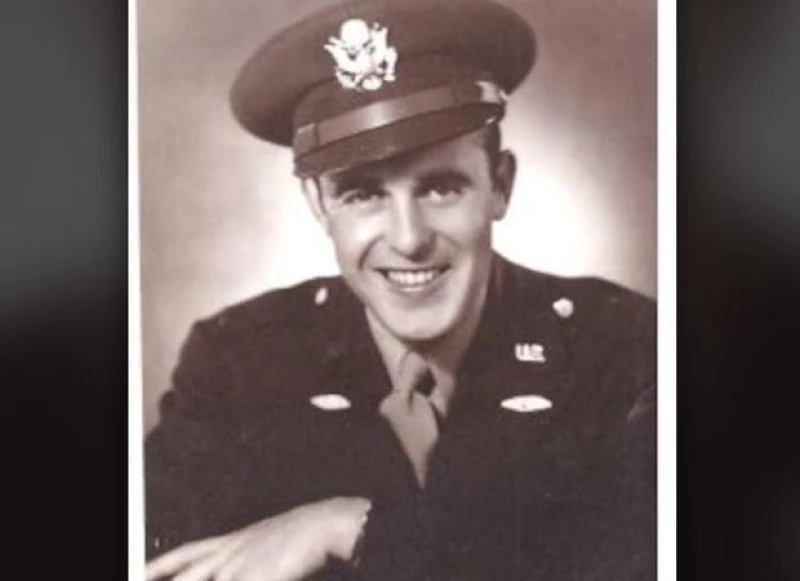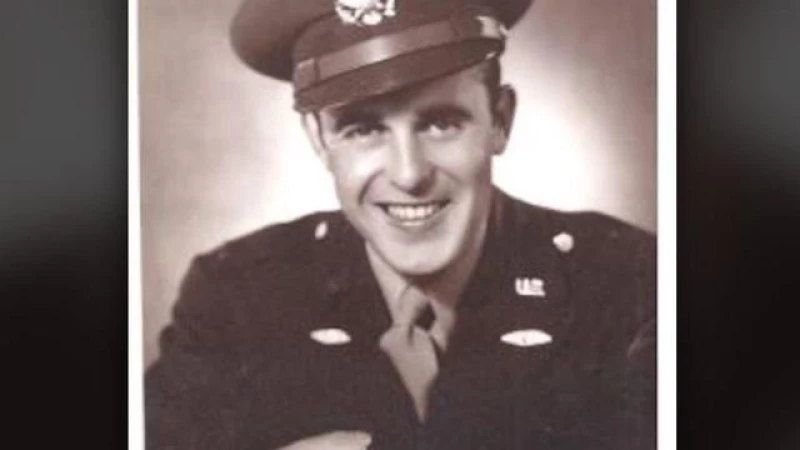Soldier's Remains from WWII Tank Strike Identified
Military scientists have identified the remains of a soldier from Indiana who died in World War II when the tank he was commanding was struck by an anti-tank round during a battle in Germany.
The Defense POW/MIA Accounting Agency announced on Wednesday that the remains of the soldier, U.S. Army 2nd Lt. Gene F. Walker of Richmond, Indiana, were identified in July, nearly 79 years after his death.

Walker, who was 27 at the time, commanded an M4 Sherman tank in November 1944 when his unit battled German forces near Hücheln, Germany. During the battle, his tank was struck by an anti-tank round, causing a fire and instantly killing Walker.
"The hit caused a fire and is believed to have killed Walker instantaneously," the agency said. "The surviving crew bailed out of the tank, but when they regrouped later were unable to remove Walker from the tank due to heavy fighting."
The War Department issued a presumptive finding of death in April 1945 for Walker, according to DPAA.
His remains were identified after a DPAA historian, who was studying unresolved American losses, determined that one set of unidentified remains recovered in December 1944 from a burned-out tank in Hücheln possibly belonged to Walker.
Remains of a soldier from World War II have been identified and will be buried in San Diego, California in early 2024. The remains of the soldier, identified as Walker, were exhumed from the Henri-Chapelle U.S. Military Cemetery in Hombourg, Belgium in August 2021 and sent to the DPAA laboratory for analysis. The identification was made through anthropological analysis, circumstantial evidence, and an analysis of mitochondrial DNA. Walker's name is currently recorded on the Walls of the Missing at Netherlands American Cemetery in Margarten, Netherlands, and a rosette will be placed next to his name to indicate that he has been accounted for.
Ongoing effort to identify remains
The Defense POW/MIA Accounting Agency (DPAA) has been working since 1973 to account for missing soldiers from World War II. They have accounted for 1,543 missing soldiers so far, but there are still over 72,000 soldiers who remain missing. The DPAA uses various methods such as DNA analysis, dental records, sinus records, and chest X-rays to identify the remains of service members killed in combat. Forensic anthropologists like Carrie Brown play a crucial role in this process. Brown works at a lab in Nebraska that has 80 tables filled with remains and personal effects that can help solve the mystery of their identities. This work is not only significant for the families of the soldiers but also for future generations.
Click here to learn more about the DPAA's ongoing efforts to identify missing soldiers from World War II.
Original article by CBS News.







